Action Items / Next Steps
Considering where to begin
Use these questions to reflect on your current youth safeguarding practices and identify your next step:
Does your organization have a youth safeguarding committee or officer in place?
If not, go to Best Practice 1: ORGANIZE. As you implement this Best Practice, you will establish a group of people who will serve as advisors and coordinators of youth safeguarding within your organization, providing essential momentum and focus in your work.
Do you want your organization’s board or leadership to be involved in prioritizing youth safeguarding?
If so, go to Best Practice 2: ENGAGE. This Best Practice will support you to involve and energize your institution’s leadership to participate in your safeguarding efforts.
Do you have youth safeguarding measures built into your screening processes for staff and volunteers?
If not, go to Best Practice 3: SCREEN. You’ll add youth safeguarding steps to your screening plans for both new and existing staff and volunteers.
Do you want guidance in discovering and addressing youth safeguarding risks within your physical or virtual youth programming spaces?
If so, go to Best Practice 4: ASSESS. You’ll be guided through assessing your spaces for risks and learn how to minimize those risks.
Does your organization have guidelines around how adults should (and should not) interact with youth? Are your staff, volunteers, and community members familiar with the guidelines?
If not, go to Best Practice 5: IMPLEMENT. Learn to create, teach, and uphold guidelines for healthy adult / youth interactions in your organization.
Do you need training on recognizing, responding to, and reporting youth maltreatment? Do you want support in drafting a plan for training your team?
If so, go to Best Practice 6: TRAIN. Make a plan for training the members of your team and use the training materials to make sure everyone has the knowledge and skills they need to safeguard youth.
Are you looking for innovative ways to support victim-survivors as an organization?
If so, go to Best Practice 7: SUPPORT. Use the sample prayers and the training materials to foster a welcoming and supportive environment for all participants, including people who have experienced abuse or maltreatment.
Do you have an organization-wide protocol for responding to suspicions or instances of maltreatment?
If not, go to Best Practice 8: RESPOND. You’ll create, develop, and implement your organization’s process for responding to maltreatment.
Are you looking for ways to involve youth in safeguarding and empower them to make meaningful change?
If so, go to Best Practice 9: EMPOWER. You’ll help youth understand body boundaries, how to respect another’s agency and autonomy, and how to stand up for others.
Have you implemented all the Best Practices and want to review your safeguarding program to make sure you’re meeting your goals?
Go to Best Practice 10: SUSTAIN. You’ll evaluate your program for long term success.
Has your organization historically experienced incidents of maltreatment?
Getting started on prevention work is not only about the future. We encourage each organization interested in using Aleinu’s resources to review its organizational history and take responsibility for any maltreatment that has occurred, whether in the distant past or more recently, whether publicly revealed or not yet acknowledged. The process of cheshbon hanefesh, holding oneself and one’s community morally accountable, is a necessary precursor to creating meaningful change in youth protection, and laying a foundation from which healing and trust become possible. Guidance for the cheshbon hanefesh process can be found here and in Best Practice 1: ORGANIZE.



